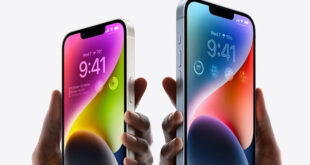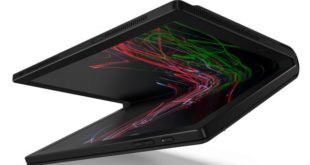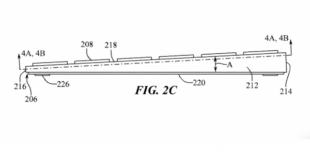
Ever since the iPhone 7 debuted, there’s been talk about what might be ahead for Apple in 2017. This year marks the 10th anniversary of the introduction of the iPhone — and, in a very real sense, the 10th anniversary of the modern smartphone market. Pick any given technology — touch interfaces, app support, or a (relatively) large screen, and there were companies that had offered these features before Apple did. What no one had done was offer them together, alongside a finger-based, multi-touch OS interface similar to what Android and iOS still use today. Rumors have been buzzing about what Apple might offer in a 10th Anniversary device, from curved screens to OLED displays.
In an article published yesterday, Bloomberg shed some light on what it expects the next-generation device (possibly dubbed the iPhone X instead of 8) to feature. Supposedly, Apple is examining features like a new screen type, a curved display, a stainless steel chassis, and improved cameras. The new display would be a nearly bezel-less affair, with all hardware buttons moved to the screen itself, similar to what Samsung did with the Galaxy S8. This could allow for a device sized in-between the iPhone 7 and 7 Plus, while offering a panel equivalent to what the 7 Plus ships with now. This rumor makes a great deal of sense, since one of the areas where the iPhone 7 was dinged (apart from its “courage“) was its bezel sizes.
The image below is by design engineer Martin Hajek. While it refers to a previous generation of iPhones, it’s an excellent demonstration of how eliminating top and bottom bezels would give an iPhone much more screen space without increasing the size of the phone.
Image by Martin Hajek
One rumor we’ve heard before is that Apple will introduce an OLED panel with this new high-end iPhone, while lower-end devices stick with LCD panels and the now-familiar 4.7-inch and 5.5-inch displays. Apple is also reportedly experimenting with curved glass front and back with a steel frame, or a thin steel band separating the top and bottom of the device. An aluminum back has also been considered, and Apple has supposedly ordered 100 million OLED panels from Samsung.
Dual vertical cameras, screen-mounted fingerprint scanners, and dual-lens front cameras are also reportedly on the drawing board as Apple decides what kind of features it wants to bake into the new phone.
What kind of phone does Apple want to launch?
I think Apple faces a tricky positioning issue here, one that hasn’t been discussed very much in our previous coverage. There are a few different ways to build an “Anniversary Edition” of something. The first, and simplest, would be to include software or design elements of the original design, but keep the hardware standard. An Anniversary iPhone that looked more like the original 2007 device, or included thematic options to skin the OS to resemble its original incarnation might serve. This option doesn’t necessarily cost much, but it’s also not a major draw.
The second option is to take relatively pedestrian hardware and wrap a whole bunch of value-added “extras” around it. The 20th Anniversary Macintosh, pictured below, was this type of product:
Apple’s 20th Anniversary Macintosh
The 20th Anniversary Macintosh didn’t pack any significant performance improvement over the other systems Apple was shipping in 1997. In fact, it was slower than the Power Macintosh G3 systems that would ship just a few months later. The Power Macintosh G3 was clocked faster, had a faster FSB, and a much larger L2 cache compared with the Anniversary Mac. What the Anniversary Macintosh did have was an integrated LCD (800×600), advanced sound and video capabilities, an integrated TV tuner, an S-Video input, an FM radio, and a Bose-designed sound system. With a price tag close to $10,000, the 20th Anniversary Mac also illustrated the problems with this approach — if people have to choose between higher-performing, less expensive systems or unique systems with less capabilities, they tend to choose the former.
The third option — the one Apple is probably pursuing — is to treat the “Anniversary” model as a sort-of preview for features that will be introduced to less expensive devices a little further down the line, while still offering some signature capabilities or design elements that make the premium device stand out. But there’s a risk here as well: If Apple shoves too many premium features into its Anniversary iPhone and leaves ordinary users feeling as if they got shafted on the yearly upgrade cycle (or are being shoved to buy a more expensive device), they’ll be less likely to step up to it. Apple will have to find a set of features that ordinary iPhone users can expect on the one hand, while reserving the right set of premium features for early adopters (aka anniversary buyers).
One way or the other, it should be one of the most interesting iPhone launches since 2007 or the iPhone 4 debut. What would Apple have to launch — and at what price point — to interest you in the device? This assumes you could be interested, since obviously some people simply aren’t willing to switch away from Android, even if Apple built a solid platinum iPhone that could do your homework, join you for a romantic dinner, and still respect you in the morning.
 #Bizwhiznetwork.com Innovation ΛI |Technology News
#Bizwhiznetwork.com Innovation ΛI |Technology News





